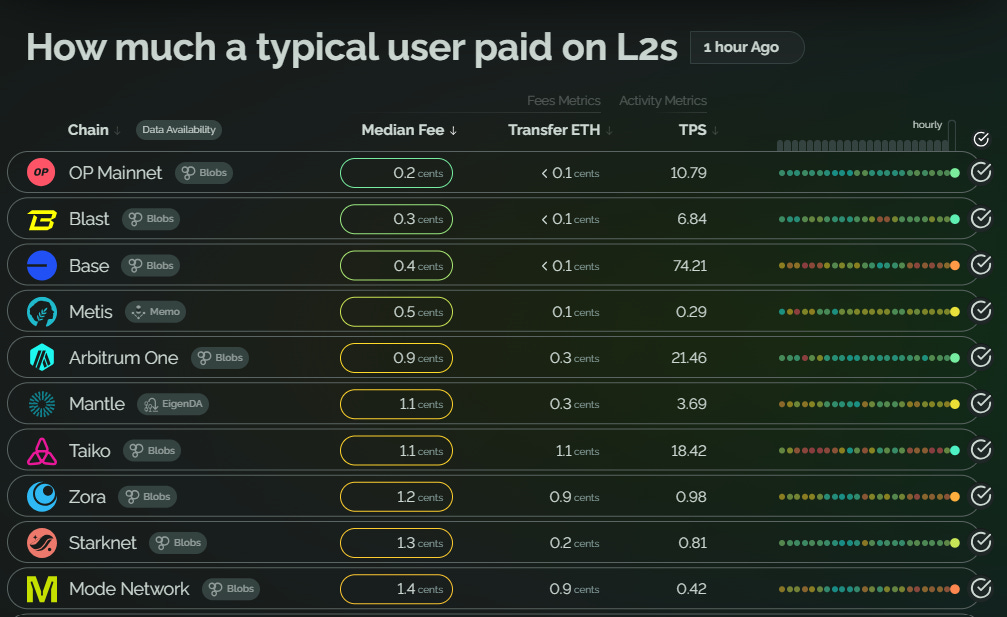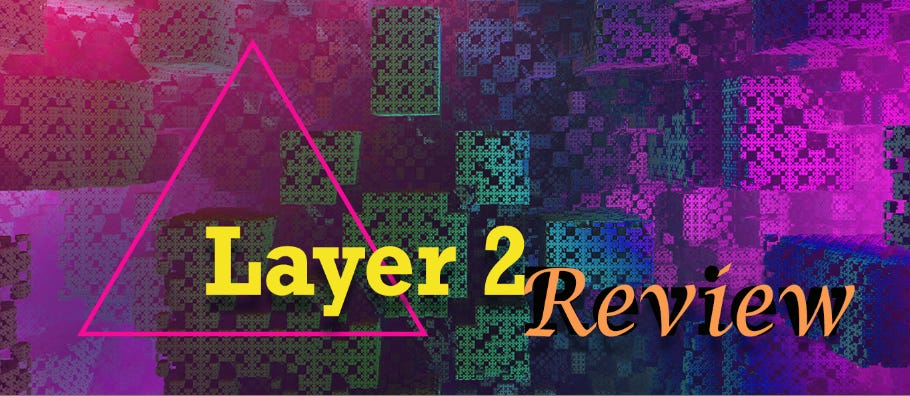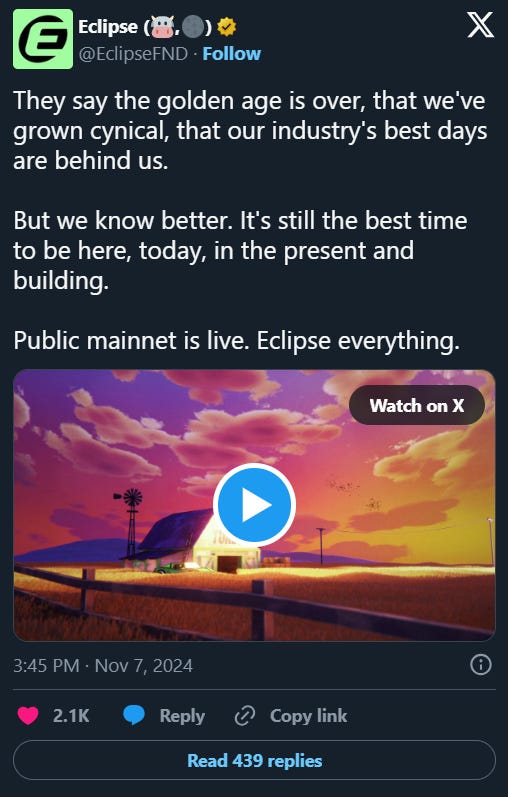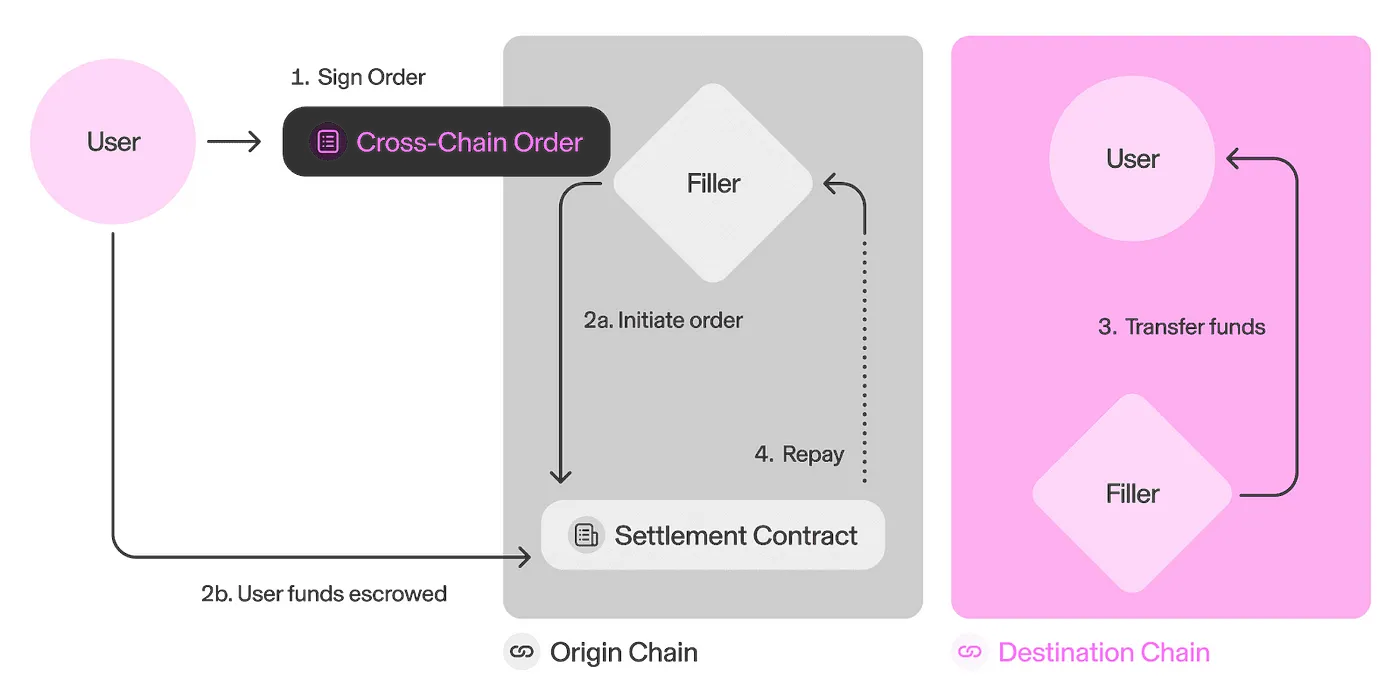Seamlessly Crossing Every Chain | Layer 2 Review
Quick Reads and Hot Links Covering the People and Projects Who Are Scaling Ethereum
Dear Frens,
Interoperability seems to be Ethereum’s Layer 2 biggest challenge currently, and Optimism is playing an active role in the quest to solve it. After backing the ERC-7683 messaging standard, OP Labs have now proposed ERC-7803, a new standard that aims to provide a fresh approach to making cross-chain transactions seamless. Join Vitalik Buterin and other industry leaders as they further shape the future of interoperability and cross-chain collaboration at the Ethereum Interop Forum happening in a few days.
Ink, the latest addition to the Superchain, has just launched their public testnet. The doors are now wide open for early birds looking to be a part of “building the future of DeFi.” In other news, Eclipse’s Layer 2 mainnet is now live. Combining the force of Ethereum’s security with the strength of the Solana Virtual Machine, the network hopes to provide users with the best of both worlds.
In this issue’s editorial, we provide you with a non-technical intro into ERC-7683, one of the standards that aims to provide a framework for cross-chain interaction on Ethereum Layer 2 and beyond. Ethereum remains committed to overcoming obstacles on its path to being the world’s supercomputer. The community is diligently working to enhance scalability, security, speed, and interoperability. Enjoy this issue of the Layer 2 Review, and see you in the next one.
Contributors: Lucent, Melasin, Tonytad, Boluwatife, Kornekt, WinVerse
This is an official newsletter of BanklessDAO. Please subscribe and share to help us grow our audience as we fulfill our mission to build user-friendly crypto onramps.
🗞️ Ecosystem Updates
⛓️ Introducing Ink.
🆕 The Ink Public Testnet is now live.
➿ 08 days until the Ethereum Interop Forum.
⚡ Unichain testnet is now live, with more than 16M transactions processed.
⭕ A deep dive into foundational elements of the Superchain and Optimism's future.
🔥 Hot News
Eclipse Launches Ethereum's First SVM Layer 2 on Mainnet
Eclipse Foundation has achieved a significant breakthrough with the launch of its mainnet, introducing the first Layer 2 solution powered by Solana Virtual Machine (SVM) on Ethereum. The public mainnet debuts with an impressive roster of over 60 applications and service providers, including notable projects like Orca, Save, and Nucleus. This strategic initiative hopes to address the long-standing divide between Ethereum and Solana ecosystems, offering developers and users access to Ethereum's substantial liquidity and security framework while utilizing Solana's renowned speed and transaction capabilities.
The platform represents a technical breakthrough in blockchain interoperability, specifically targeting the limitations that have historically separated Ethereum and Solana developers. By implementing a Layer 2 solution that combines Ethereum's robust security features and established liquidity pools with Solana's efficient transaction processing, Eclipse creates a unified environment where developers can build applications that use the strengths of both networks. Interested in learning more about this new development? Check out this tweet. 👇🏽
🏛 Governance
💬 Proposals in Discussion
Arbitrum
https://forum.arbitrum.foundation/t/rfc-fund-completion-of-cex-dex-incentive-research/27416
https://forum.arbitrum.foundation/t/proposal-add-support-for-eip-4788/27436
Optimism
Seamlessly Crossing Every Chain
Author: Lucent
With many Layer 2 rollups emerging, the Ethereum ecosystem has become quite fragmented. While these networks are helping scale Ethereum, they have introduced interoperability issues. In early August, Vitalik mentioned how soon these interoperability challenges could become a thing of the past, outlining three standard proposals that aim at resolving the issue.
ERC-3770 suggests a new address format for wallets and decentralized apps, making it easier for users to navigate different chains. ERC-7683 focuses on establishing a standardized method for Layer 2 networks to communicate and trade across different chains via liquidity providers, simplifying current processes. ERC-3668 introduces a standardized approach for Ethereum smart contracts to access off-chain data efficiently, known as “Layer 2 light clients,” that could reduce data storage costs on-chain.
In this article, we take a look at the ERC-7683 standard and how it could shape the future of interoperability on Ethereum.
ERC-7683: A Standard for Cross-Chain Intents
ERC-7683 aims to simplify and streamline initiating transactions across different chains within the Ethereum ecosystem and potentially beyond. Proposed by Across and Uniswap, it is referred to as a standard for “cross-chain intent” which is essentially a user’s directive to perform a specific action, such as transferring assets or executing a swap across chains.
The standard format encoded by ERC-7683 allows user intent to be verified across different networks, meaning users no longer have to submit unique instructions for each chain, as their encoded intent can be executed regardless of the blockchain. It basically allows users to initiate multi-chain transactions in a single step.
Mechanisms
One of the major pieces of ERC-7683 is the CrossChainOrder struct. Think of this as a packaged set of instructions that includes important details like the ID of the chain where the order starts, deadlines for completing it, and the address of the contract where the transaction should end. There’s also the ISettlementContract interface, which ensures that every order is initiated and resolved.
A simple workflow of the standard is as follows:
Firstly, the user signs the order that includes all the necessary details for the transaction
The order is then disseminated to fillers, who are basically participants within the ecosystem that facilitates the fulfilment of the cross-chain order.
Once a filler is chosen for the transaction, the filler initiates the order on the source chain
After the order initiation on the source chain is complete, user funds are escrowed and the filler performs order fulfilment on the destination chain
Finally, the cross-chain settlement process occurs involving transferring the tokens to the user on the destination chain and compensation to the filler.
With the harmonized function of three layers; the intent, solver, and the settlement layer, interoperability is a step closer to being easier. User experience is also enhanced with wallets that support ERC-7683. These wallets make it simple to initiate multi-chain transactions and send alerts if something goes wrong or there’s a delay. ERC-7683 could significantly reduce the transaction fees and steps associated with moving assets across networks.
The Future of Interoperability?
The ERC-7683 standard creates a universal filler network, allowing various applications to use a shared structure for cross-chain transactions. The current ERC-7683 setup allows for flexibility and encourages competition among fillers, which can lead to faster transaction times and potentially lower costs for users. The increased competition may also boost overall liquidity, benefiting liquidity providers looking for the best opportunities to allocate their capital. For example, UniswapX leverages this standard to enhance cross-chain trading, letting users access trades with competitive pricing from multiple liquidity sources.
However, a key challenge remains in ensuring sufficient cross-chain liquidity. If there aren’t enough active fillers to fulfill users' cross-chain intents, the standard may not deliver optimal costs or improved experiences. Widespread adoption is essential; as more use cases and users embrace ERC-7683, it will attract more fillers, strengthening the system's efficiency. With support from major Layer 2 networks already, ERC-7683 could soon become widely adopted, bringing us closer to solving interoperability challenges.
If you would love to dive deeper into more technical details, check out this ERC-7683 documentation.
📈 Data
Total Value Locked on L2s is About $40 billion!

Top Ten Projects by Total Value Locked:
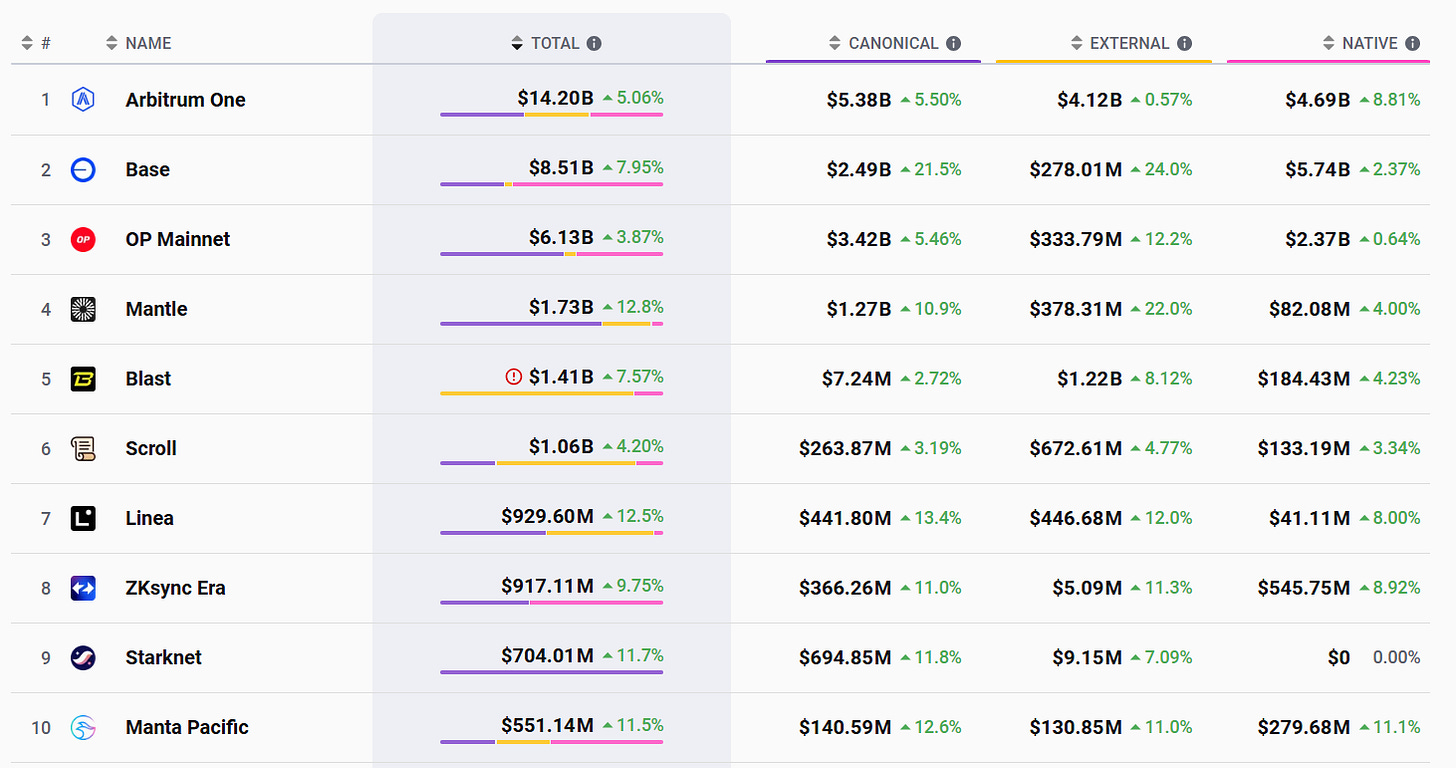
🔭 Project Watch
Arbitrum
Top Projects by TVL in the Last 7 Days
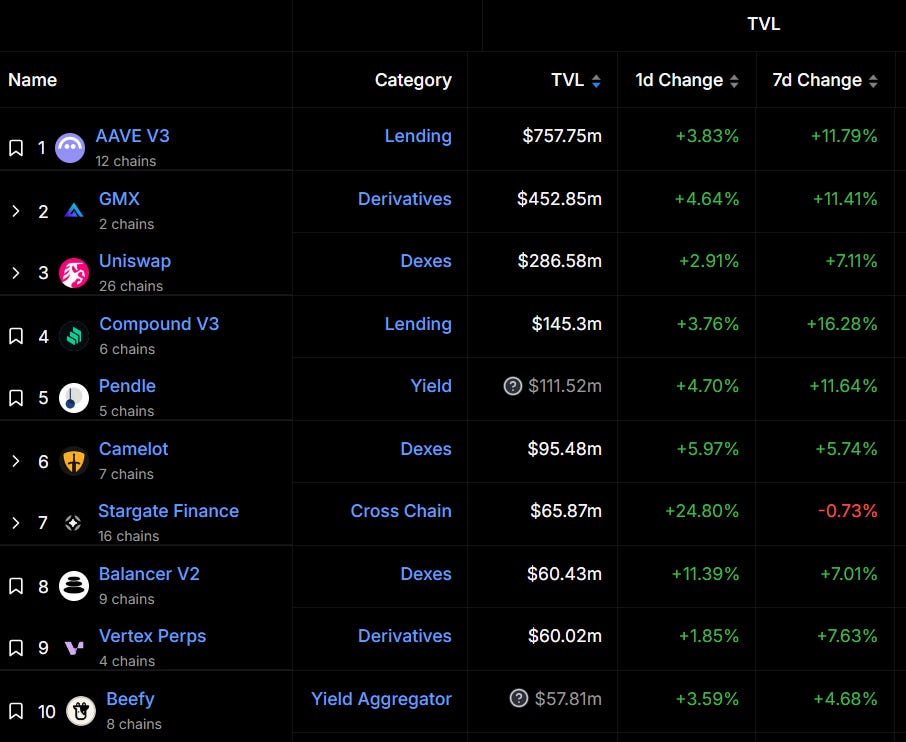
Optimism
Top Projects by TVL in the Last 7 Days
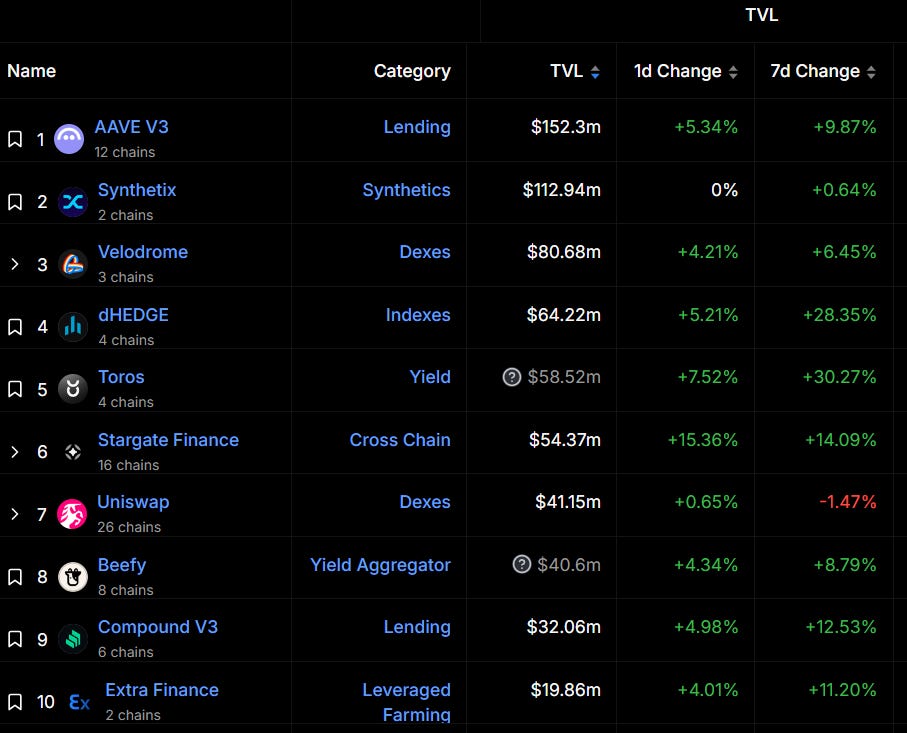
Base
Top Projects by TVL in the Last 7 Days
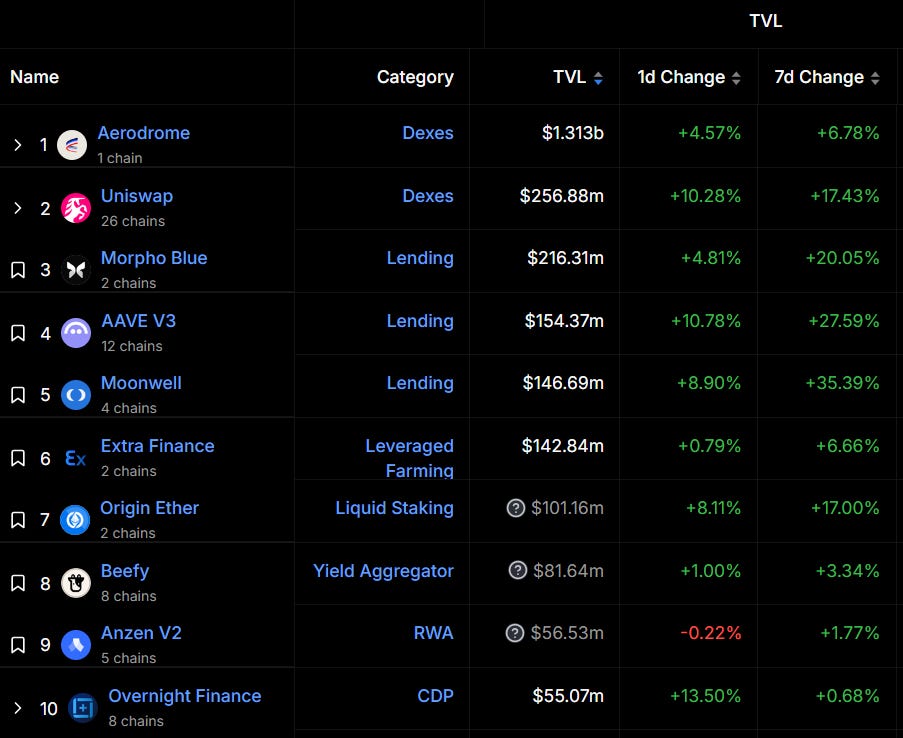
zkEVM
Top Projects by TVL in the Last 7 Days
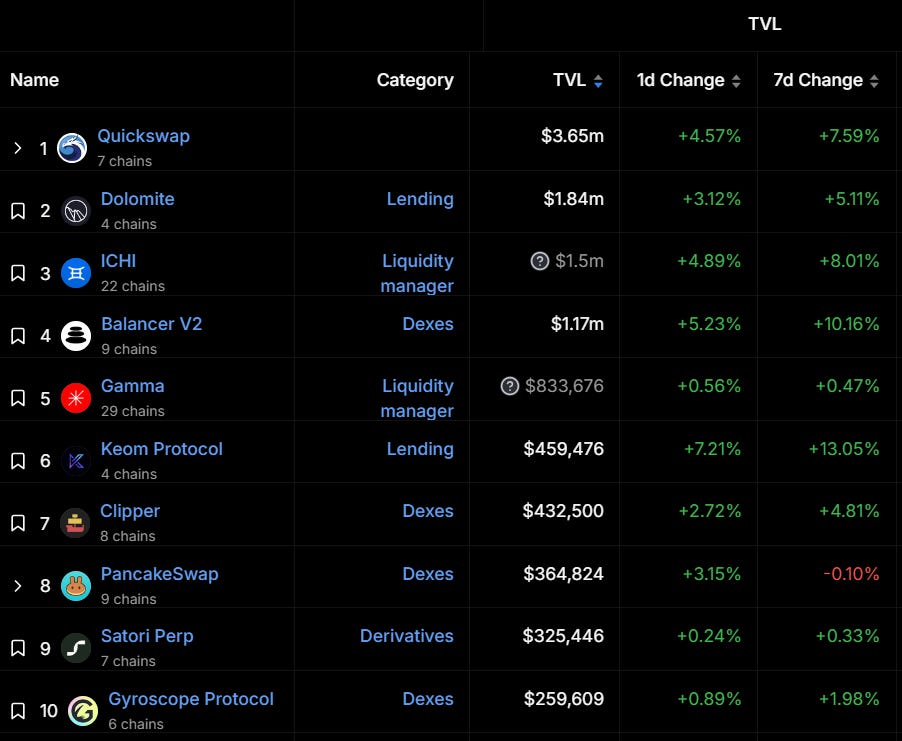
🔥 L2 Fees and Costs Update
Transaction Fees as of November 7, 2024:
